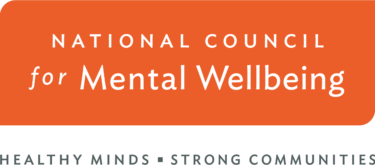Behind the badge, many officers are quietly navigating the realities of substance use disorder (SUD) — a deeply human response to prolonged exposure to danger, high-stakes decision-making, and a culture that discourages vulnerability as a form of strength.
The bullet proof vest most officers wear will save their life, but not their peace. Approximately 30% of first responders will develop an SUD at some point, with 1 in 6 officers requiring formal intervention. The prevalence of alcohol use disorder is particularly concerning, with nearly 8% of officers meeting the criteria for lifetime alcohol use or dependence and 30% of officers reporting having binge drank in the last 30 days.
Despite growing awareness, many officers face stigma and structural barriers when seeking support. Law enforcement demands resilience, yet the officers that communities rely on most during crises often have the fewest resources to navigate their own. Prioritizing officers’ physical and mental health is essential to ensuring they have the support to continue serving their communities with strength and resilience.
To make real progress, we need to look at what’s driving the problem. The constant stress, repeated trauma exposure, physical strain and demanding shift work create a perfect storm of risk factors, increasing the likelihood of substance use and addiction. Tackling this crisis requires not just understanding these challenges but actively addressing them with targeted solutions.
The Psychological Toll of Law Enforcement
The psychological demands of law enforcement are profound. Officers routinely witness human suffering and respond to life-threatening incidents. Over time, this repeated exposure to trauma can leave a lasting imprint, making it challenging to fully disengage even in moments of safety.
Officers respond to this exposure in different ways. Some build adaptive resilience over time, while others absorb the cumulative impact of repeated trauma. Symptoms of post-traumatic stress disorder, such as emotional numbing, intrusive memories and difficulty managing emotions, are common among those exposed to high-stress, high-risk environments.
Officers with post-traumatic stress disorder are two to four times more likely to develop an SUD than the general population. Alcohol and other substances often become tools for coping, used to dull painful memories, reduce anxiety or regain a fleeting sense of control. In the absence of healthy outlets and structured support, these coping strategies can evolve into dependence, especially in a culture that prizes emotional restraint over emotional expression.
Chronic Stress and Hypervigilance
While essential on duty, law enforcement officers’ hypervigilance, including constant threat assessment and split-second decision-making, does not simply shut off at the end of a shift. Many officers struggle to relax, have difficulty sleeping and experience heightened irritability. Over time, the inability to transition out of a high-alert state can take a toll on personal relationships and overall wellbeing.
Stress is a well-documented risk factor in both the development of addiction and relapse vulnerability. Chronic exposure to high-stress situations keeps the body’s fight-or-flight system activated, flooding it with cortisol and adrenaline. This prolonged stress response contributes to anxiety, depression and sleep disturbances, all of which increase the risk of substance use. Some officers may use alcohol or other substances to temporarily suppress this heightened state, attempting to quiet their minds and regain a sense of balance.
The Physical Toll: Injury, Pain and Prescription Drug Use
The physical demands of law enforcement are relentless. Officers carry heavy gear, endure long shifts and respond to high-intensity situations that often lead to injury. Over time, chronic pain from wearing duty belts, prolonged sitting in patrol vehicles and engaging in physical altercations can become a major issue.
To manage pain, officers are often prescribed opioids or other painkillers. While these medications play a necessary role in recovery, they also carry significant risks. Research shows that even short-term opioid use increases the likelihood of long-term dependence, particularly for those in high-stress professions. Studies indicate that up to 10% of officers prescribed opioids for pain management continue using them months later. Without alternative pain management strategies, what starts as legitimate medical use can escalate into dependency.
Shift Work and Sleep Deprivation
The structure of police work itself increases health risks. Rotating schedules and overnight shifts disrupt circadian rhythms, leading to chronic sleep deprivation. Studies show that shift work is associated with an increase in binge drinking and alcohol consumption, along with increased risk of sleep disorders, cardiovascular disease, diabetes, high blood pressure and depression.
Sleep deprivation significantly increases the likelihood of substance use. Officers struggling with rest may turn to alcohol as a sedative, while others rely on stimulants, caffeine or nicotine to stay alert on duty. Nearly 20% of officers report using sleep-promoting drugs in the past month, and 28% use substances to stay awake, including high doses of caffeine. Without adequate sleep support and structured recovery time between shifts, officers remain trapped in a cycle of exhaustion that is often intertwined with substance use.
The Culture of Silence and Stigma
One of the biggest obstacles to addressing substance use in law enforcement is stigma. The “blue code of silence” that protects officers in many situations can become a barrier when it discourages seeking help. Many fear that acknowledging their challenges will be seen as a sign of weakness or lack of control, or will place their careers at risk.
This pressure to maintain a facade of strength often leads officers to attempt to manage their substance use challenges on their own, often waiting until it reaches a crisis point before seeking treatment. The longer the issue goes unaddressed, the greater the impact on officers, their families, their agencies and the communities they serve.
Breaking this cycle requires leadership at all levels of law enforcement to create cultures where seeking help is seen as a proactive step rather than a career risk. When officers have access to confidential, nonpunitive support, they are more likely to get the help they need before substance use escalates or affects their ability to serve.
Supporting Officer Recovery: Effective Solutions
Some of the most promising developments for addressing mental health and substance use challenges in law enforcement include:
- Peer Support Programs: These initiatives connect officers with colleagues who have navigated recovery themselves, creating a foundation of trust that traditional treatment programs often lack.
- Comprehensive Behavioral Health Programs: Regular psychological screenings, confidential counseling, targeted substance use education, and trainings like Mental Health First Aid for Public Safety — which equips officers with the skills to recognize and respond to mental health and substance use challenges — can promote open dialogue, reduce stigma and encourage personnel to seek support when needed.
- Early Intervention Systems: Departments that implement behavioral monitoring programs can identify changes in performance or wellbeing before substance use becomes entrenched.
- Anonymous Reporting Mechanisms: Officers can express concerns about a colleague without fear of betraying the brotherhood, encouraging a culture where seeking help is seen as responsible rather than weak.
- Return-to-Work Policies: Structured recovery programs with modified duty assignments, along with return-to-work agreements (RTWAs), provide a clear path for officers transitioning back to duty after treatment. RTWAs establish expectations such as ongoing treatment participation, regular drug testing, and medical check-ins, ensuring accountability while reinforcing departmental support. These approaches help officers return to work successfully, so that seeking help does not mean the end of an officer’s career.
- Police Assisted Addiction and Recovery Initiative (PAARI): Founded in 2015, PAARI partners with law enforcement agencies to create nonarrest pathways to treatment and recovery by embedding recovery coaches, providing access to naloxone and linking individuals to community-based care.
By shifting the focus from punishment to prevention and recovery, departments can foster a culture where officers feel supported, access help earlier and successfully return to duty.
The Path Forward
As these challenges persist, the demands placed on law enforcement continue to grow. Officers are not only enforcing laws — they are responding to mental health crises, navigating large-scale emergencies and managing conflicts that stretch them well beyond their traditional roles. With these expanding responsibilities, access to mental health support and stress management resources is more critical than ever to prevent substance use and promote long-term resilience. Though awareness is a start, addressing SUDs demands a sustained commitment to building systems of support that meet the realities of modern policing.
This approach is vital for not only the health and safety of our officers, but that of the communities they serve.
Author
Senior Advisor, Substance Use Disorder in the Strategy and Growth Office
National Council for Mental Wellbeing
See bio




